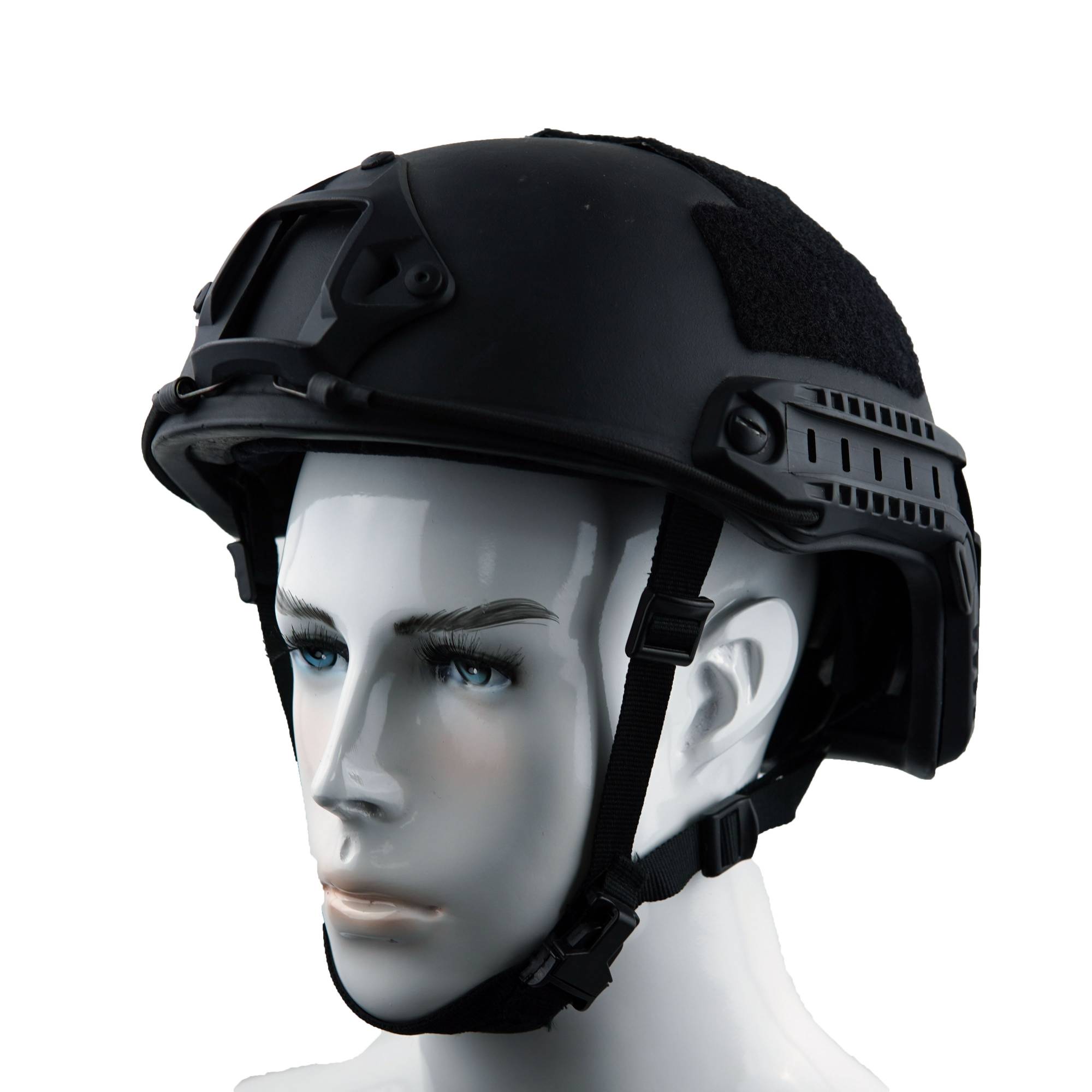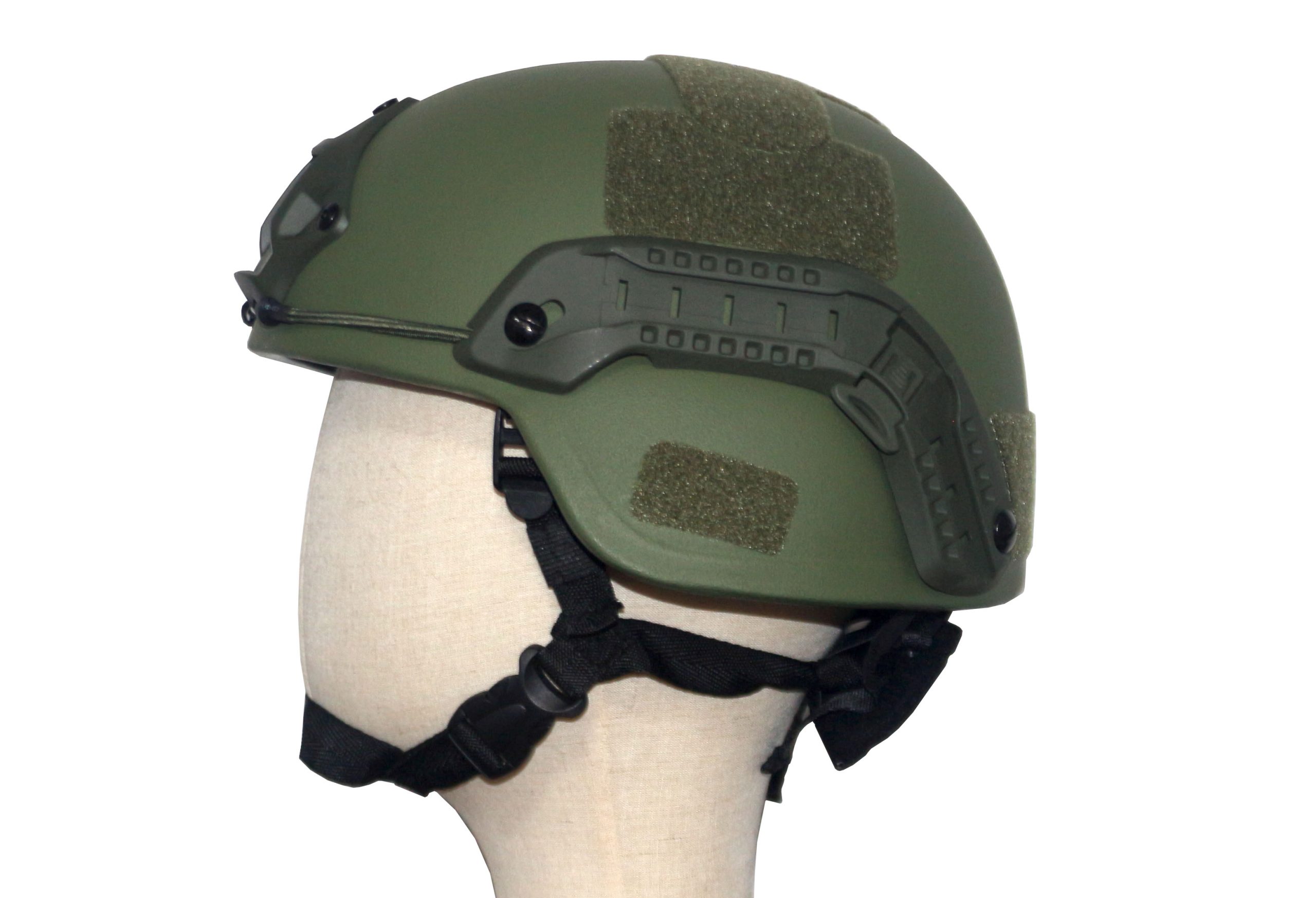Ballistic helmets protect against threats like shrapnel and bullets, making them essential for safety. Choosing the right ballistic helmet ensures optimal protection and comfort for different scenarios. Ballistic helmet types vary in shape, material, and features, allowing users to select options tailored to military, law enforcement, or civilian needs.
.jpg)
Types of Ballistic Helmets
Helmet Shapes
Ballistic helmet shapes play a crucial role in determining protection and functionality.
- The full-cut helmet offers maximum coverage, shielding the ears and sides of the head. It is ideal for situations requiring enhanced ballistic resistance, such as military operations.
- The mid-cut helmet provides a balance between coverage and mobility. It protects critical areas while allowing better compatibility with communication devices.
- The high-cut helmet prioritizes agility and lightweight design. It is favored by tactical teams who need to integrate accessories like night vision mounts or headsets seamlessly.
Choosing the right shape depends on the user’s mission and environment. Full-cut helmets suit high-risk scenarios, while high-cut helmets cater to fast-paced tactical needs. Mid-cut helmets offer versatility for mixed-use applications.
Popular Models
Several popular ballistic helmet models dominate the market due to their proven performance.
- The PASGT (Personnel Armor System for Ground Troops) helmet is a classic design known for its robust ballistic protection. It features a full-cut shape and is widely used in military settings.
- The MICH (Modular Integrated Communications Helmet) improves on PASGT by offering better comfort and compatibility with modern gear.
- The FAST (Future Assault Shell Technology) helmet is a high-cut tactical helmet designed for lightweight performance and accessory integration. It is popular among special forces and law enforcement.
Each model caters to specific needs, making it essential to match the ballistic helmet type with the intended use.
Materials and Protection Levels
The materials used in ballistic helmets determine their protection level and durability.
- Kevlar remains a popular choice due to its lightweight and high-strength properties. It offers reliable ballistic protection against shrapnel and small arms fire.
- UHMWPE (Ultra-High Molecular Weight Polyethylene) is another advanced material that enhances ballistic resistance while reducing weight.
Ballistic helmets are tested against NIJ ballistic helmet protection levels to ensure their effectiveness. These standards classify helmets based on their ability to withstand specific threats. Users should prioritize helmets that meet or exceed NIJ standards for optimal safety.
Understanding the materials and protection levels helps users select helmets that balance durability, weight, and ballistic protection.
Key Features to Consider
Comfort and Fit
Comfort plays a critical role in the effectiveness of a ballistic helmet. A well-padded interior reduces pressure points and ensures prolonged wear without discomfort. High-quality padding materials, such as memory foam, conform to the user’s head shape, providing a snug fit. Suspension systems further enhance comfort by evenly distributing the helmet’s weight. These systems minimize strain on the neck and shoulders, which is essential during extended missions.
Users should prioritize helmets with adjustable padding and advanced suspension designs. These features not only improve comfort but also ensure the helmet stays securely in place during high-movement activities.
Adjustability and Sizing
Proper adjustability ensures a ballistic helmet fits securely and performs optimally. Adjustable straps allow users to customize the fit, preventing the helmet from shifting during critical moments. A well-balanced helmet with even weight distribution reduces fatigue, enabling users to stay focused on their tasks.
When selecting a helmet, users should test the adjustability of the straps and check for a secure fit. Lightweight designs with balanced weight distribution are ideal for long-term use, especially in dynamic environments.
Accessories and Compatibility
Modern ballistic helmets often feature accessory compatibility, enhancing their functionality. Night vision mounts allow seamless integration of night vision goggles, critical for low-light operations. Communication device compatibility ensures users can stay connected without compromising protection.
When choosing a helmet, users should evaluate its ability to accommodate essential accessories. A helmet that supports modular attachments provides greater versatility, making it suitable for various tactical scenarios.

How to Choose the Best ballistic Helmet
Mission-Specific Needs
Different missions demand specific features from a ballistic helmet. Military personnel often face high-velocity threats in combat zones. They require helmets with advanced ballistic protection and compatibility with tactical gear. Law enforcement officers prioritize lightweight tactical helmets for mobility during operations like crowd control or hostage rescue. Civilian users, such as journalists or security professionals, need helmets that balance protection and comfort for extended wear in unpredictable environments.
Matching the helmet type to the mission ensures optimal performance. Users should evaluate their operational needs carefully before selecting a helmet.
Balancing Weight, Protection, and Comfort
A tactical helmet must strike the right balance between weight, protection, and comfort. Heavier helmets provide superior ballistic protection but can cause fatigue during prolonged use. Lightweight designs enhance mobility but may compromise coverage. Comfort features, such as padding and suspension systems, reduce strain and improve wearability.
Users should prioritize helmets that meet their protection requirements without sacrificing comfort. Testing different models helps identify the best fit for long-term use.
Compatibility with Tactical Gear
Modern ballistic helmets must integrate seamlessly with other tactical gear. Plate carriers, goggles, and communication devices are essential for mission success. Helmets with modular attachment points allow users to customize their setup based on operational demands. High-cut designs often provide better compatibility with accessories, ensuring unrestricted movement and functionality.
Choosing a helmet that supports gear integration enhances efficiency in the field. Users should verify compatibility with their existing equipment before making a purchase.

H WIN is a professional manufacturer of PASGT, MICH, and FAST ballistic helmets, offering reliable protection for military and tactical use. OEM customization is available to meet your specific needs—contact us for tailored solutions.
